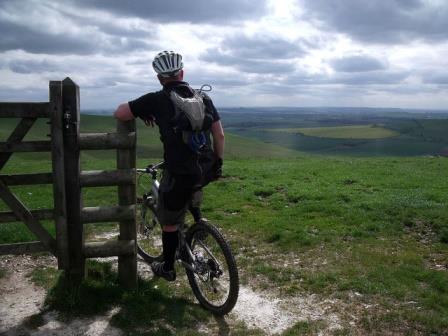This article has been written by Andrew Cameron, Chair of the Executive Board of the LNP. The article is based on a paper originally written by Andrew is his capacity as a consultant to businesses but has been edited for use by the LNP.
The opening statement of the report from the All Party Commission on Physical Inactivity states:
'The UK faces an epidemic of physical inactivity. Over the last half century we have simply stopped moving—in our schools, our work places, our towns, cities—and how we get between them. In all human history, we have never been so inactive.'
The report goes on to list the cost of physical inactivity to health and the economy, because the two are inextricably linked.
Of course the problem starts in childhood where physical inactivity is leading to childhood obesity but adults are no better.
Nearly a quarter of all adults fail to achieve 30 mins activity over the course of a week so it's no surprise then that heart disease, diabetes, hypertension and mental health problems, such as stress and depression, have all increased by 25% - 45% costing the UK economy £20 billion per year.

Cycling Pewsey Downs by Oliver Cripps 2012
The cost to business has been put at nearly £6 billion per year through absenteeism and the associated costs of employees being off work through illness.
What is not fully measured or accounted for is the rate of decline in an individual's ability to perform at work as the effects of physical inactivity take hold. Stress and anxiety for example might impair a person's ability for months before reaching the point that they require treatment and time off.
The All Party Commission on Physical Inactivity (APCOPI) talks about the need for exercise at school and in April 2014 the government pledged £150m to help schools facilitate and embed physical activity but what about adults?
Those adults who are in their 40s and 50s probably did have plenty of exercise at school so whilst I understand the need to create a culture that encourages activity at an early age, that is no guarantee that we'll see a decline in any of the above mentioned diseases.
The problem is that we lead more sedentary lives. We sit at desks, we take lifts instead of stairs, we drive instead of walk, we use our brains not our bodies. Exercise at school is great but the real challenge is physical activity once you're in work.
How can we motivate people to exercise more? The National Ecosystem Assessment paper makes clear links between green space and exercise: 'Green exercise, comprising of activity in green places in the presence of nature, is associated with positive health outcomes, which exceed those experienced from exercising in environments lacking nature.'
In other words taking a 30 minute walk through a woodland has more health benefits than a 30 minute walk through a housing estate.
How do they know this? A widely used method of measuring benefits is called the Rosenburg Self Esteem Scale. High self esteem leads to happiness, good leadership, resistance to stress and greater work achievement. Low self esteem leads to depression, anxiety, lack of assertiveness and unhappiness.
Numerous studies have shown that people who spend time outside in green spaces have higher self-esteem than those that don't. The more natural and interesting the environment is the better people feel and the higher the self-esteem they have.
So there is a link: Time in green natural space = higher self esteem + physical activity = more productive and healthy employees.
Businesses directly benefit from natural green space in reduced costs of absenteeism and higher levels of productivity.
In its first report into the value of the natural environment in 2011 the government stated that looking after our 'green space' better would be worth £30 billion a year to the economy including health and wellbeing benefits. It also highlighted the loss of green space since the 1980s: 10,000 less playing fields, 90% decline in allotments. And it stated that failure to look after, improve and enhance our green spaces would cost us £20 billion a year, some of that being the costs related to declining health and wellbeing.
Dr William Bird has published numerous reports linking green space with increased physical activity and a decline in the diseases identified by APCOPI as being in the ascendency.
Proximity to green space is a factor as is the variation of habitat. The closer to green space we live the more likely we are to get out and visit it. The more interesting the space is the more we will visit it. This means that a patch of grass is somewhere we will go to but if it also has trees, shrubs, ponds, birds and other wildlife, we will visit more frequently.
Therefore, investment in green spaces would pay for itself by reducing the healthcare costs associated with illnesses linked to physical inactivity and save businesses the known and unknown costs of employees becoming ill and needing time off.
We all work much harder and unfortunately we only measure success on the wealth of businesses and individuals. We see it as shame that heart disease and mental health are on the rise but we don't knock anything off the 'bottom line' to reflect this failure in society.
Are we going to work less? Probably not, so we really do need to address the problem of physical inactivity and it seems to me that more, better and bigger green space is required if we are to give hard working people a chance to relax and exercise. It's also no coincidence that 'more, better and bigger' was the plea from the Lawton Report: Making Space for Nature.
The more 'natural' the environment, the more we'll benefit from it and looking at the figures being stated I would say that an investment in the natural environment will not only pay for itself, they'll also be big fat bonuses as well.


